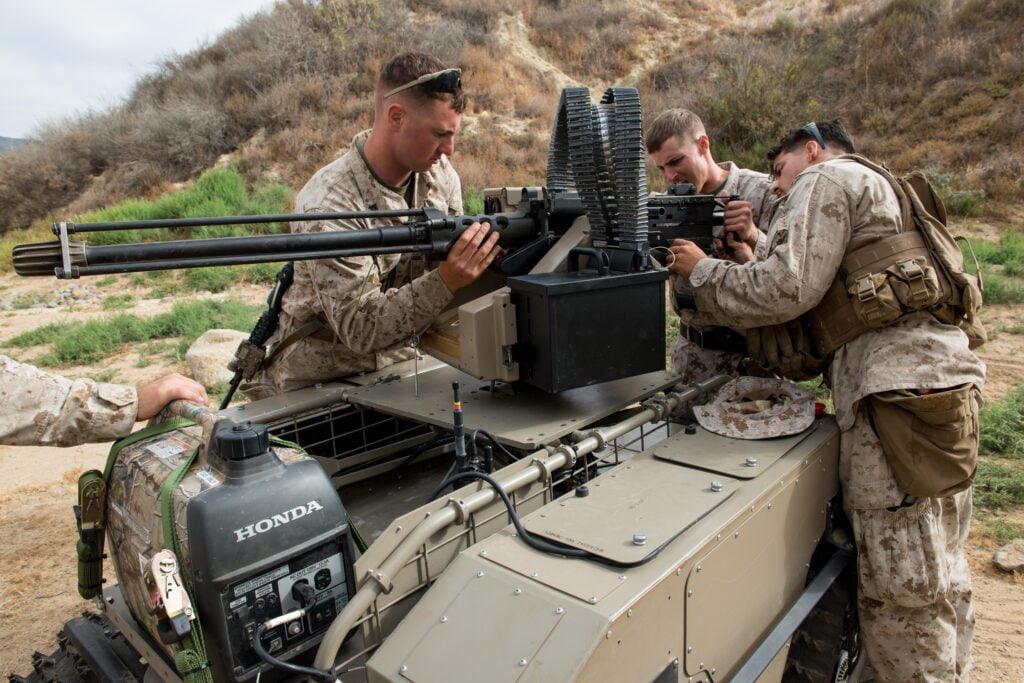Marines to use robots as force multipliers
Breaking Defense:
Robotic small "tanks" will probably be one component of the landing force. It appears that the one in the picture above is powered by a Honda generator.
I suspect there will be more long range standoff weapons like the Navy's rail gun system to destroy some of the enemy infrastructure before the assault.
The article is worth reading in full.
There is more as they explain the ground component of the operation.
Since World War II, the US military has always expected to fight outnumbered. Soon, however, expendable unmanned systems may change that. For the first time in 70 years, America could have numbers on its side. That turns traditional assumptions about tactics, technology, and budgets upside down.
“It does flip things,” said Lt. Gen. Robert Walsh, deputy Commandant of the Marine Corps. “We’ve been down the path of each system getting more expensive, more complicated, and therefore we’re buying less of them….What we see is the opportunity with unmanned systems to provide more mass.”
Mass, as a principle of war, boils down to “quantity has a quality all its own.” The US has spent decades developing ever-smaller numbers of ever more expensive and “exquisite” weapons. Each fighter, helicopter, tank, or ship is vastly more capable than its predecessors, able to hit more targets over a wider area in a shorter period — but it still can only be in one place at a time, which limits your flexibility. Each high-end system can also be killed by one lucky shot, which limits your resilience against damage.
These factors may not have been crippling in counterinsurgency, but in an all-out war, there’ll be enough shots that some will get lucky. (It’s an old problem, as Kipling wrote of British officers on the Indian frontier: “Two thousand pounds of education/Drops to a ten-rupee jezail.”) And enough brute force can flatten finesse. At the receiving end of, say, a Russian cluster-munition barrage, expensive advanced technology blows up as easily as cheap stuff.
To reduce casualties in future landing operations, Walsh has already called for amphibious forces to have robotic vanguards. “Instead of Marines being the first wave in, it’s unmanned robotics, whether it’s in the air or the surface or subsurface…sensing, locating, and maybe killing (targets),” he said this morning at the AUVSI Unmanned Systems Defense conference. But today he also went into greater detail about a wider range of robotic applications that the Marine Corps’ considering.
In the air, a manned fighter like an F-35B could launch aerial drones ahead of itself and then hang back as their digital “quarterback,” Walsh said, keeping the human pilot out of the worst danger zones while extending his or her influence over much more space. You could even replace the manned mothership with an unmanned one and have a large, long-range drone disperse a swarm of smaller, short-range drones once it reached the target area.
...
Robotic small "tanks" will probably be one component of the landing force. It appears that the one in the picture above is powered by a Honda generator.
I suspect there will be more long range standoff weapons like the Navy's rail gun system to destroy some of the enemy infrastructure before the assault.
The article is worth reading in full.

Comments
Post a Comment